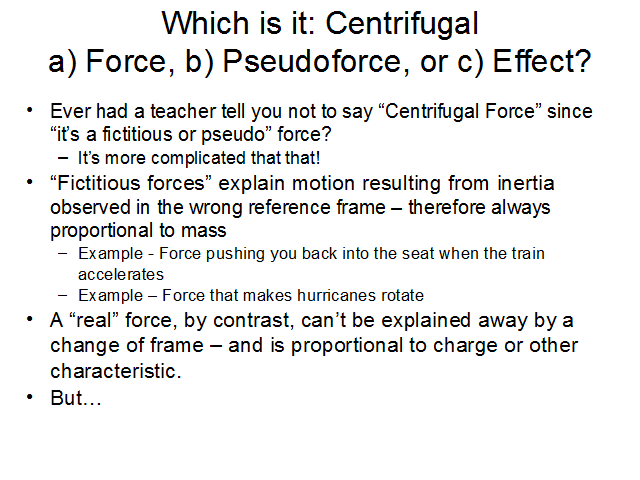
NOTES
Which is it - Centrifugal force, pseudoforce, or effect? Some teachers will tell you not to use the term "force" preferring to say "centrifugal pseudoforce" or "centrifugal effect" because "the centrifugal force is a fictitious force," Before I go any further in this talk, I intend to decide which term to use, once and for all.
Basically, a fictitious force is the explanation an observer makes up when he or she observes motion due to an object's inertia from an inappropriate reference frame. For example, when you're in a train that is accelerating, everything onboard that isn't nailed down tends to move towards the back of the train. You could call that the Caboose force and create a law to predict it, but a non-accelerating observer sees what's really going on - the back of the train is rushing forward towards objects that are resisting being accelerated (due to inertia). A "real" force, by contrast, has an obvious cause like the train seat pushing into you, because the engine is pulling it Notice that because these effects are due to inertia, "fictitious forces" are always proportional to the mass of the object being affected. A real force is one that can't be explained away by a change in frame of reference - and a sign of that is that the force is not proportional to the mass of the object being affected (so by F=ma, acceleration is independent of mass). For example, the electrical force on a particle depends on the charge on the particle, not on the particle's mass. But this has an interesting implication.
